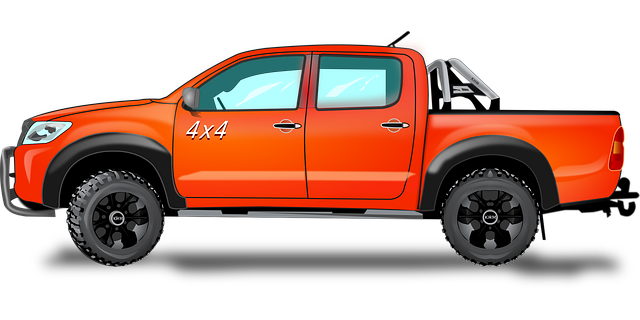Maintaining fleet truck tire rotation in Brownsville is a strategic cost-saving and safety measure. It involves alternating tires between axles to prevent uneven wear. Using structured schedules, managers can optimize tire performance, reduce accidents, and improve efficiency. The right winch type—electric or hydraulic—is crucial for minimizing downtime during rotation. Key factors include capacity, technology, budget, usage, and charging stations. Effective practices include regular assessments, rotation schedules, monitoring systems, proper inflation, and visual inspections to ensure tire health and safety in diverse Brownsville conditions.
In the dynamic world of trucking, efficient fleet management is key to success. One often overlooked yet critical aspect is regular tire rotation, which can extend tire life, improve safety, and reduce costs. This article guides Brownsville fleet managers through understanding fleet truck tire rotation, exploring different winch types for seamless rotation, and providing a step-by-step guide to implement best practices. By optimizing tire rotation, businesses can ensure their trucks remain on the road, enhancing operational efficiency and safety.
- Understanding Fleet Truck Tire Rotation: The Importance and Benefits
- Types of Winches for Efficient Tire Rotation in Trucks
- Choosing the Right Winch for Your Brownsville Fleet: Factors to Consider
- Implement Effective Tire Rotation Practices: A Step-by-Step Guide for Truck Fleets
Understanding Fleet Truck Tire Rotation: The Importance and Benefits

Maintaining proper fleet truck tire rotation in Brownsville is a critical aspect of vehicle care, offering numerous advantages for businesses operating a trucking fleet. This process involves regularly alternating tires from one axle to another, ensuring even wear and tear across all four tires. By implementing a structured rotation schedule, fleet managers can extend the lifespan of their tires, improving overall cost-efficiency.
Regular tire rotation also significantly enhances safety on the road. Different axles support varying amounts of weight and experience different levels of stress while turning or accelerating. Rotating tires allows for a more balanced distribution of this stress, reducing the risk of blowouts, skids, or other tire-related accidents. This is especially crucial in the demanding driving conditions often faced by fleet trucks in Brownsville and its surrounding areas.
Types of Winches for Efficient Tire Rotation in Trucks

In the world of fleet management, efficient tire rotation is key to maintaining vehicle performance and safety, especially for trucks traversing long distances in areas like Brownsville. To facilitate this, various types of winches are designed for truck tire rotation. Electric winches offer a modern solution, allowing for precise control and minimal physical effort. Their compact design makes them suitable for tight spaces, while their high torque ensures quick and efficient tire changes.
For larger fleets or scenarios requiring more rugged handling, hydraulic winches prove invaluable. These powerful machines can tackle heavy tires with ease, making them popular choices for off-road or construction sites in Brownsville. Hydraulic winches provide a stable lifting mechanism, ensuring tires are changed securely. With the right winch type, fleet managers can streamline tire rotation processes, reduce downtime, and ultimately enhance the operational efficiency of their trucks.
Choosing the Right Winch for Your Brownsville Fleet: Factors to Consider

When selecting a winch for your Brownsville fleet, several key factors come into play to ensure optimal performance and efficiency during truck tire rotations. The first consideration is the capacity or load rating of the winch. This should align with the weight of your trucks and the tires being rotated, ensuring the winch can handle the task without straining. For instance, if you operate heavy-duty trucks with large tires, opt for a winch with a higher lifting capacity.
Additionally, the type of winch technology matters. Electrical winches offer smoother operation and are easier to control during tire rotations, especially in tight spaces. They also require less maintenance compared to hydraulic or mechanical models. However, electrical winches might be more expensive and have specific battery requirements. Consider your budget, fleet usage, and the availability of charging stations at your Brownsville facility when making this choice.
Implement Effective Tire Rotation Practices: A Step-by-Step Guide for Truck Fleets

Implementing effective tire rotation practices is a crucial aspect of maintaining your truck fleet’s health and performance, especially in regions like Brownsville where varying terrain and weather conditions can take a toll on tires. Here’s a step-by-step guide to help you optimize your fleet’s tire management:
1. Assess Your Fleet and Tires: Begin by evaluating the size and type of tires across your entire fleet. Understand the specific needs of different truck models and their intended usage. Identify any existing wear patterns or issues that might impact rotation strategies.
2. Develop a Rotation Schedule: Create a regular tire rotation schedule, typically recommended every 5,000 to 8,000 miles or at least quarterly. Assign specific lanes or tasks to different sets of tires based on their performance and condition. For instance, reserve premium tires for local city driving while allocating more durable options for long-haul routes. This ensures balanced wear across all tires, prolonging their lifespan.
3. Use Tire Monitoring Systems: Invest in tire monitoring systems that track pressure, temperature, and wear. These tools provide real-time data, allowing you to make informed decisions about tire maintenance and rotation. In Brownsville’s diverse driving conditions, such technology can help identify potential issues early on.
4. Maintain Proper Inflation Pressure: Regularly check and maintain the recommended inflation pressure for your tires. Underinflation or overinflation can accelerate wear, compromising tire performance and safety. Consistent pressure ensures optimal life and fuel efficiency for your fleet’s tires.
5. Inspect Tires Rigorously: Conduct thorough visual inspections of tires at regular intervals. Look for cuts, punctures, cracks, or uneven wear patterns. Address any issues promptly to prevent them from escalating. Regular inspections complement rotation practices, ensuring no single tire is overworked or neglected.
In conclusion, efficient fleet truck tire rotation in Brownsville is not just a practice but a necessity. By understanding the importance and benefits, selecting the right winch for your specific needs, and implementing a step-by-step guide, you can significantly enhance your truck fleet’s performance, safety, and longevity. This strategy ensures that each tire receives adequate wear, thereby reducing costly repairs and maximizing fuel efficiency.



